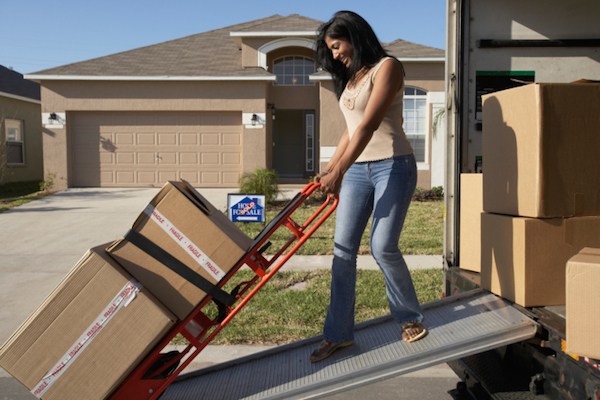our blog

Moving Appliances: What to Do and What Not to Do
August 9, 2017
When it comes to those hard-to-move items and figuring out how to solve challenges like how to move a piano or a valuable piece of art, there are just as many good practices as there are bad. What we mean by that is for every solid idea we’ve seen a client or friend have when moving a refrigerator on their own or with the help of professional movers, we’ve seen just as many faulty ones that have resulted in someone breaking a valuable or even hurting themselves.
Whether you’re moving a fridge, dishwasher, and/or a stove, appliances are always one of the most difficult aspects of any move. Here are the top things to do as well as what to avoid when moving appliances.
Table of Contents
What to Do and What to Avoid When Moving Appliances
1. Create a Path
Just like when moving valuables or other difficult items, the first thing you want to do is create a clear path to the moving truck that is direct and with few bumps or changes that can compromise the appliance. Additionally, lay down blankets or towels so that you don’t scuff up your hardwood floor or track any dirt in from outside. But make sure to secure these so they don’t slide around too much or get in the way while in motion.
2. Don’t Skimp on Moving Materials
If you’re moving your appliance yourself or with friends, then use some of the money you’re saving on security straps, dollies, and other moving gear that will take some of the weight off of you and your helpers. Do your homework and review the best moving products offered by companies like New City Moving.
3. Unplug Your Fridge 24 Hours in Advance
Now here’s a common mistake: waiting until the day of the move to finally clean out your fridge and turn it off. If you don’t give yourself sufficient time to open the doors, throw away any perishables, and sop up melting ice with rags, you’ll be carrying a leaking fridge that can create puddles that are true safety hazards.
4. Drain Your Washing Machine
Much like your fridge, a washing machine needs plenty of time to be unplugged. Additionally, you’ll want to remove the hose to drain any excess water left in the machine so that you’re not carrying water weight on top of the already heavy appliance. Failing to do this doesn’t just create more work, it poses serious risks to your safety while moving.
5. Hire Professionals
Of course, you’ll also need to properly disconnect your stove, a process that even the expert home mover can struggle with instead of hiring a professional that is experienced with all aspects of moving. While it’s entirely possible to move your appliances on your own, by hiring a professional you’re saving on the stress and physical duress that moving such items cause.
Learn More About Moving in Chicago
- Moving Offices in Chicago: Follow These 5 Easy Steps
- How To Prepare Your Employees for an Office Move in Chicago
- How to Handle Moving During Bad Weather
- The Ultimate Guide for Moving Into Albany Park
- The Ultimate Guide for Moving Into Humboldt Park
Page Updated on November 16, 2018




 800-733-6644
800-733-6644



